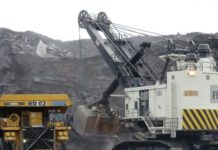
APPIAN Capital Advisory is to sue Sibanye-Stillwater for at least $1.2bn following the South African firm’s decision to terminate the purchase two base metal mines.
The UK private equity firm said today it had served Sibanye-Stillwater with “a notice of claim” in which it says the reasons for withdrawing from the transaction were “unsupportable”.
Announcing the deal termination in January, Sibanye-Stillwater said “a geotechnical event” at the Santa Rita nickel mine had drastically reduced the six year life of its open pit by two or three years. Santa Rita has significant underground resources but Sibanye-Stillwater characterised these as ‘blue sky’ options.
Sibanye-Stillwater responded to Appian’s statement today saying its timing was designed to create a trial by media situation ahead of its full-year results presentation.
Sibanye-Stillwater agreed in October to buy Atlantic Nickel and Mineração Vale Verde (MVV), companies that hold Santa Rita as well as Serrote, a copper mine that is ramping up to full production.
The purchase of the two companies were part of Sibanye-Stillwater’s diversification into battery metals production and followed other diversification transactions worth more than $1bn earlier in the year.
“In reality, the instability had minimal impact on the mine and these types of occurrences are expected in mature mining operations,” said Appian today.
Less than 1% of the total surface area of the open pit mine had been affected by the “crack”, it said. Moreover, daily ore mine exceeded level before the event only two days later. Appian added that it did not expect any loss of ore or mine life. The area where the geotechnical event took place would be mined out in the second half of this year.
“To justify its termination, Sibanye incorrectly stated, both to Appian and the public, that a material and adverse event had occurred at the Santa Rita mine. Appian believes this characterisation is false, damaging and defamatory.”
Neal Froneman, CEO of Sibanye-Stillwater, told Miningmx in February he was confident the firm was in its legal rights to pull the transaction. Sibanye-Stillwater’s lawyers had examined its decision to withdraw from the transaction “every which way”, he said.
“We didn’t take the decision lightly. We have substantial open cast expertise in the group which we brought in because of our move into these areas,” he said.
Sibanye-Stillwater said in the wake of the Atlantic Nickel and MVV terminations that it would press ahead with its diversification plans, although it might be harder to progress. “It could constrain us because it is becoming more competitive so it might be harder (to bid for assets on value),” said James Wellsted, spokesman for Sibanye-Stillwater.
“But the strategy will continue.”
“Litigation via the media”
The timing of Appian’s announcement to pursue legal claim was described by Sibanye-Stillwater as “an apparent effort to disrupt the announcement of our results, and to engage in litigation via the media”.
“We reject both Appian’s apparent strategy, and the substance of its comments. Its public characterisation of the geotechnical event experienced at Santa Rita is both superficial and wrong,” the company said.
Sibanye-Stillwater said the dispute was to be resolved by the English High Court. “If Appian decides to commence proceedings, we shall vigorously defend our position and are confident that we will prevail,” the company said.
Sibanye-Stillwater is due to report its full year financial and operating results for its 2021 financial year on March 3. (Thursday) where it is expected to unveil a strong performance owing to elevated platinum group metal prices. But some strategic questions hang over it it including how it will manage its ageing gold portfolio.
In the shorter term, there’s also the matter of a potential strike at its gold mines. Unions have rejected a series of pay offers submitted by Sibanye-Stillwater and have subsequently received a strike certificate. However, the unions are yet to press the button on a strike.










